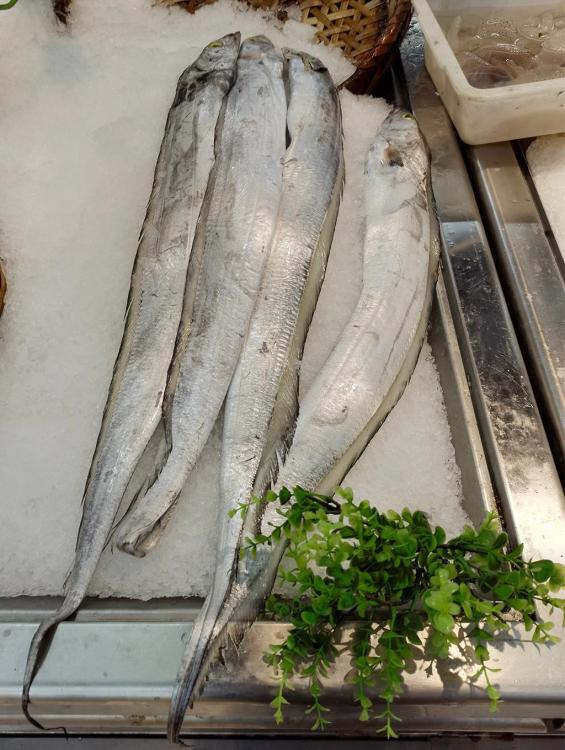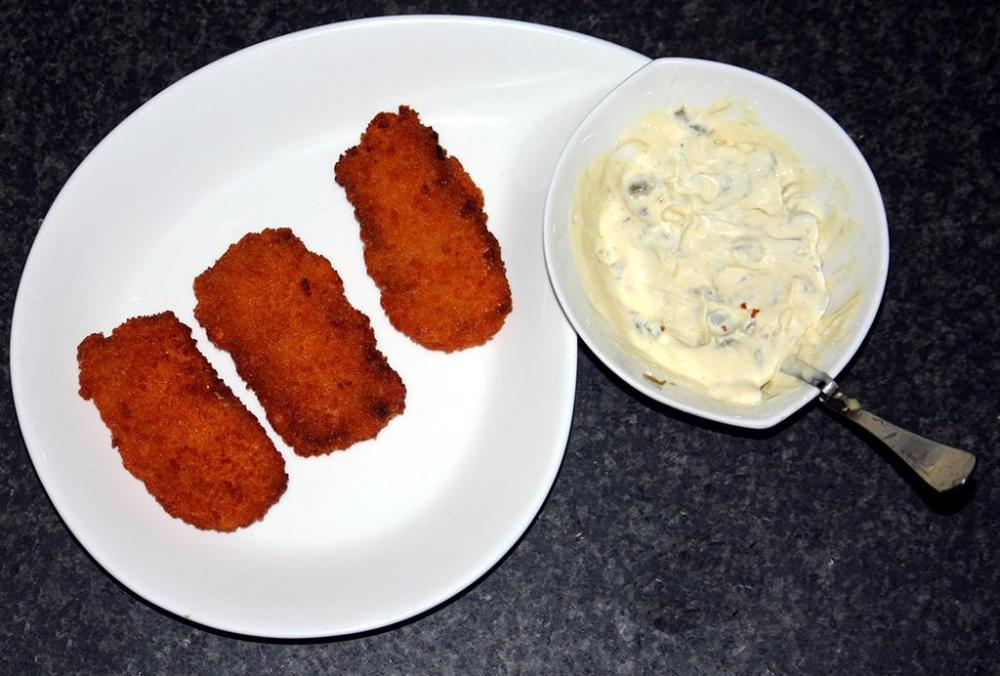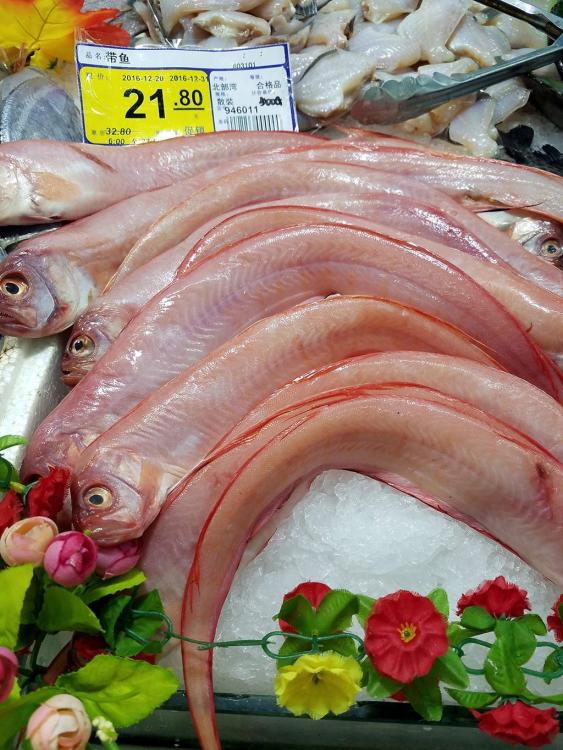Chances are everyone will know 带鱼 (dài yú), Trichiurus lepturus, Belt Fish, although the names you use may differ. I’m going with ‘belt fish’ as it’s the one I know best and it is a direct translation of the Chinese name. It is also known as ‘largehead hairtail’, ‘ribbon fish’ ‘atlantic cutlassfish’ or ‘pacific cutlassfish’, among other names.
These long, thin fish grow up to 2.34 metres / 7 ft 8 inches, although most are around 500 cm – 1 metre / 1 ft 8 in – 3 ft 3 in. I understand those caught in Australian waters may be longer. Those in the image above were just under 60 cm / two feet.
Distinctly blue tinged when alive, the colour quickly fades post mortem to become a silvery grey. They are native to many seas around the world, although there is argument about whether they are all precisely the same species. They all taste the same, and that’s all that matters here. Their value as food means that they are one of the world’s top ten most commercially landed species.
Most supermarkets sell these whole as well as cut into approximately 10 cm / 4 in pieces. These segments are also often sold after being flash frozen at sea.
Segmented Belt FIsh
The popular, sweet tasting fish is easy to de-bone and can be fried or braised and is often prepared in 红烧 (hóng shāo) style, a term that is often translated as ‘red-cooked’ and is simply braising in soy sauce.
Breaded Belt Fish fried and served with home made tartar sauce.
There is also a mysterious red-fleshed version, no mention of which I can find anywhere. But I have a photo!
Red Belt Fish?
May be a dfferent species.







